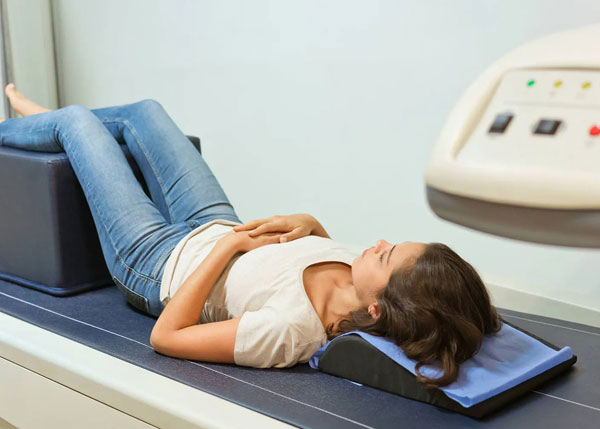Bone Densitometry (BMD)

Bone densitometry is a test performed to assess bone density loss through the monitoring and measurement of bone density. This test is used to diagnose osteoporosis, which develops as a result of calcium loss in the bones. Bone densitometry is also known as dual-energy X-ray absorptiometry or bone density scanning. Very small amounts of radiation are used during this procedure.
- Bone densitometry is a standard method for assessing bone density.
- It provides a quick and painless measurement of bone loss,
- The lower hip and lower back are often used to measure bone density in the lower back.
The purpose of measuring bone density
In women, bone loss starts after the age of 40 and accelerates with menopause. On average, women lose 15% of their bone mass in the first 10 years after menopause, while men lose 20-30% throughout their lives. As bone loss increases, so does the risk of fractures. Measurement of bone density can be used to calculate the risk of osteoporosis and fractures and for follow-up after treatment.
Osteoporosis, which is one of the events that most affect women after menopause, is the loss of calcium content in the bones, leading to thin bones and an increased risk of fractures.
Bone densitometry is often used to diagnose osteoporosis. Of course, this condition can also occur in men. If your bone density is low, you and your doctor should plan how to act or get treatment before a fracture occurs.
Bone density measurement is also used to show other causes of bone loss and to evaluate the effectiveness of your treatment.
Who can have bone density measurements?
- If you smoke or have a personal or family history of hip fracture,
- Men with conditions associated with decreased bone mass,
- People with type 1 diabetes (juvenile or insulin-dependent) or a family history of osteoporosis,
- Have an excessive increase in collagen levels or a significant change in bone content in a urine test,
- People with a spinal fracture or other signs of osteoporosis,
- Premenopausal women at high risk for osteoporosis,
- Women who have had surgical menopause (removal of both ovaries),
- Postmenopausal women at risk,
- Postmenopausal women who are slim and tall,
- Those who have a family history of osteoporosis, people with spinal fractures,
- Those who are less than 160 cm tall and weigh less than 50 kg,
- Those who lose more than 2.5 centimeters in height each year,
- Those who are over the age of 65 years,
- People who are on a diet low in calcium,
- If you had a fracture in adulthood from a minor blow or injury,
- People with decreased bone density (osteopenia), according to the X-ray results
- Excessive alcohol, tobacco, and coffee consumption,
- In case of contraindications to estrogen therapy,
- People with a low level of estrogen
- Those who need to be immobilized for more than 1 month,
- Diabetics,
- Those who are taking long-term medications such as heparin, antacids corticosteroids (prednisone), Dilantin and barbiturates, and thyroid hormones.
Who cannot have bone density measurements?
- Pregnant women,
- In case any contrast agent is administered, both orally or by intravenous injection, 2 or 6 days before the measurement date
- Patients who are not able to stand still,
- People who suffer from severe spinal deformity
